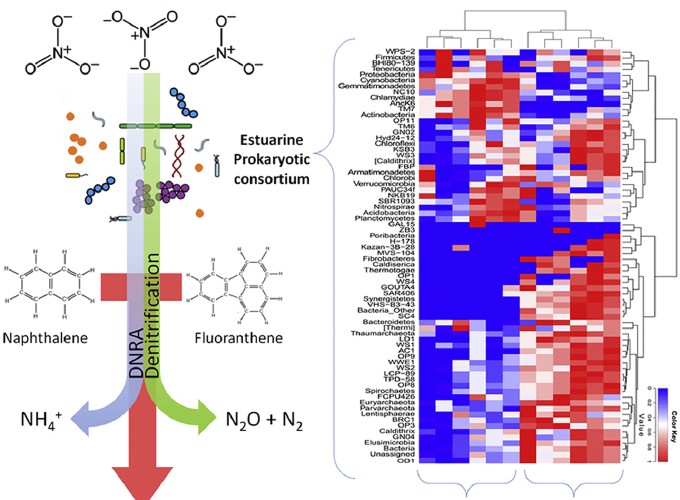 Image credit: Hugo Ribeiro
Image credit: Hugo Ribeiro
Potential of dissimilatory nitrate reduction pathways in polycyclic aromatic hydrocarbon degradation
Abstract
This study investigates the potential of an indigenous estuarine microbial consortium to degrade two polycyclic aromatic hydrocarbons (PAHs), naphthalene and fluoranthene, under nitrate-reducing conditions. Two physicochemically diverse sediment samples from the Lima Estuary (Portugal) were spiked individually with 25 mg L−1 of each PAH in laboratory designed microcosms. Sediments without PAHs and autoclaved sediments spiked with PAHs were run in parallel. Destructive sampling at the beginning and after 3, 6, 12, 30 and 63 weeks incubation was performed. Naphthalene and fluoranthene levels decreased over time with distinct degradation dynamics varying with sediment type. Next-generation sequencing (NGS) of 16 S rRNA gene amplicons revealed that the sediment type and incubation time were the main drivers influencing the microbial community structure rather than the impact of PAH amendments. Predicted microbial functional analyses revealed clear shifts and interrelationships between genes involved in anaerobic and aerobic degradation of PAHs and in the dissimilatory nitrate-reducing pathways (denitrification and dissimilatory nitrate reduction to ammonium - DNRA). These findings reinforced by clear biogeochemical denitrification signals (NO3− consumption, and NH4+ increased during the incubation period), suggest that naphthalene and fluoranthene degradation may be coupled with denitrification and DNRA metabolism. The results of this study contribute to the understanding of the dissimilatory nitrate-reducing pathways and help uncover their involvement in degradation of PAHs, which will be crucial for directing remediation strategies of PAH-contaminated anoxic sediments.